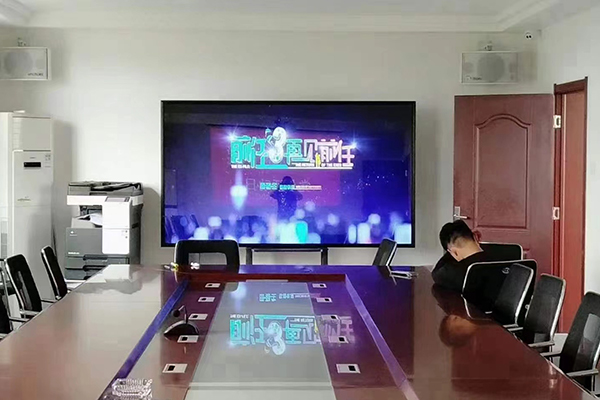Principle of interactive electronic whiteboard technology
Principle of interactive electronic whiteboard technology
With the development of science and technology, the previous single teaching method has been gradually improved. Multimedia classrooms use multi-channel teaching content presentation methods to organically combine theoretical teaching and intuitive teaching, mobilize students' multiple senses to participate in learning, improve the quality of teaching, improve teaching efficiency, and expand the scale of teaching.
At present, in the application of multimedia classrooms, the commonly used solutions are mainly projectors, physical exhibition stands, computers, etc. Such solutions can conveniently present physical objects, computer teaching courseware, videos, audio and other teaching content to students. However, in most teaching practices, traditional "blackboard writing" is still the most commonly used teaching method, because through blackboard writing, teachers can improvise teaching content and effectively control the teaching process. Therefore, the combination of multimedia classrooms and blackboard writing has become a teaching mode that many teachers like. It is under this demand background that interactive electronic whiteboards have entered between teachers and students and gradually become an indispensable teaching tool.
interactive electronic whiteboard are an advanced education or conference auxiliary human-computer interaction device. It can be used with projectors, computers and other tools to achieve dust-free writing, random writing, remote communication and other functions. From the hardware principle, the interactive electronic whiteboard integrates large-screen projection technology, precise positioning test technology, etc. At present, there are many technologies in the international or domestic market that can achieve precise positioning of electronic whiteboards, representative of which are electromagnetic induction, infrared, resistance, ultrasound, CCD and other technologies. Each technology has different characteristics and advantages, and occupies a certain share in the electronic whiteboard market.
This article mainly briefly introduces the current different electronic whiteboard precise positioning test technologies from the perspective of implementation technology.
The principle of infrared technology is: the infrared receiving and transmitting tubes densely distributed around the display area form a horizontal and vertical scanning grid to form a scanning plane network. When there is an object that can block infrared light and blocks a pair of horizontal and vertical infrared scanning lines in the grid, the X, Y coordinates can be determined by the position of the blocked horizontal and vertical infrared rays to achieve coordinate positioning.
Analysis of advantages and disadvantages of the technology
Advantages:
1. Accurate positioning and high precision
2. No special pen is required, and fingers, pointers, etc. can be used for writing or touch operation
3. Long service life, fast response speed, and low cost
Disadvantages:
1. No pressure response
2. May be affected by strong infrared light
The principle of ultrasonic technology is: using the slow transmission speed of ultrasonic waves, the distance from the transmitting point to the receiving point is calculated based on the time from ultrasonic wave transmission to reception. The principle of plane positioning is to place two ultrasonic receiving devices at a fixed distance on one side of the screen. The pen used for positioning is an ultrasonic transmitter. When the pen moves on the surface of the screen, the ultrasonic wave emitted is detected by the receiver along the surface of the screen. The distance between the pen and the two receivers can be calculated by the time of receiving the ultrasonic wave. The principle of three-point positioning is adopted, that is, the vertex of the pen can be determined according to the known three sides of the triangle, and the position coordinates of the pen are calculated. It is a distance measurement positioning mode.
Analysis of advantages and disadvantages of the technology
Advantages:
1. Relatively accurate positioning
2. Strong adaptability, can be used on devices of different areas
Disadvantages:
1. Uneven positioning accuracy
2. Affected by temperature
3. Need to write with a special pen

